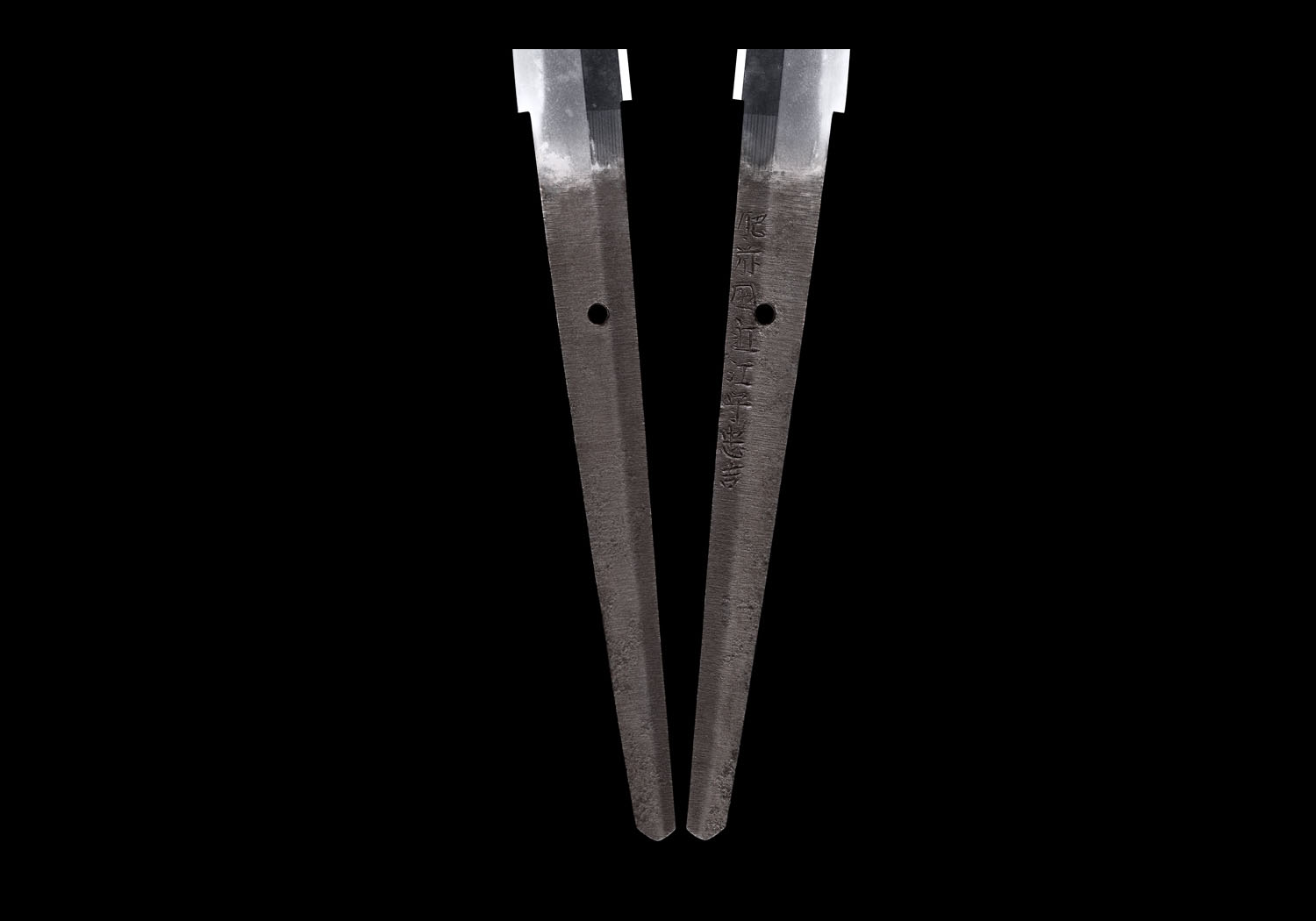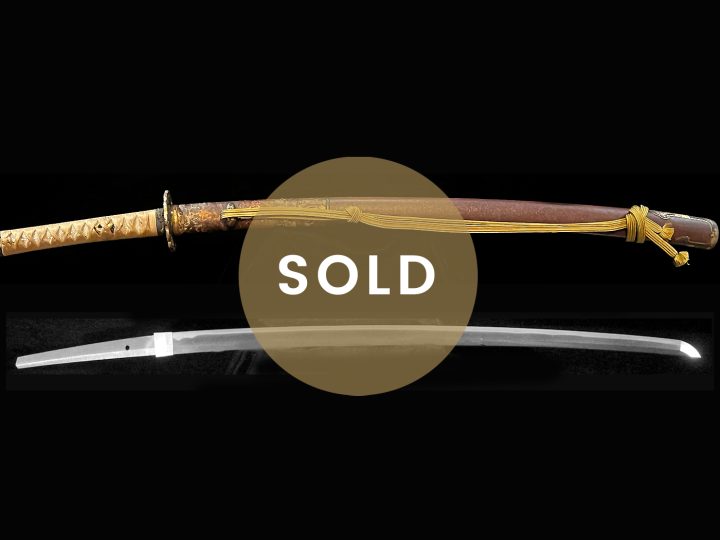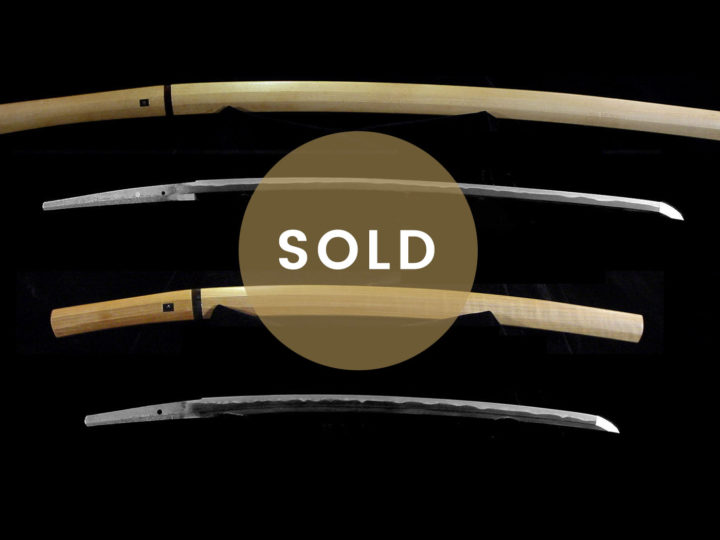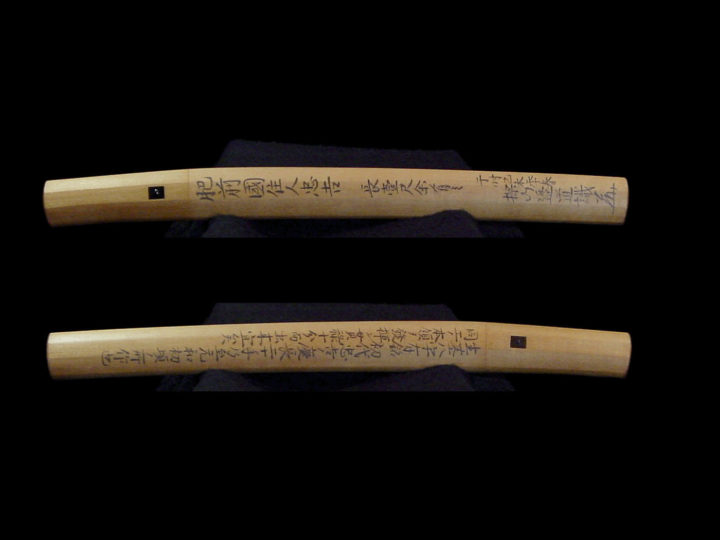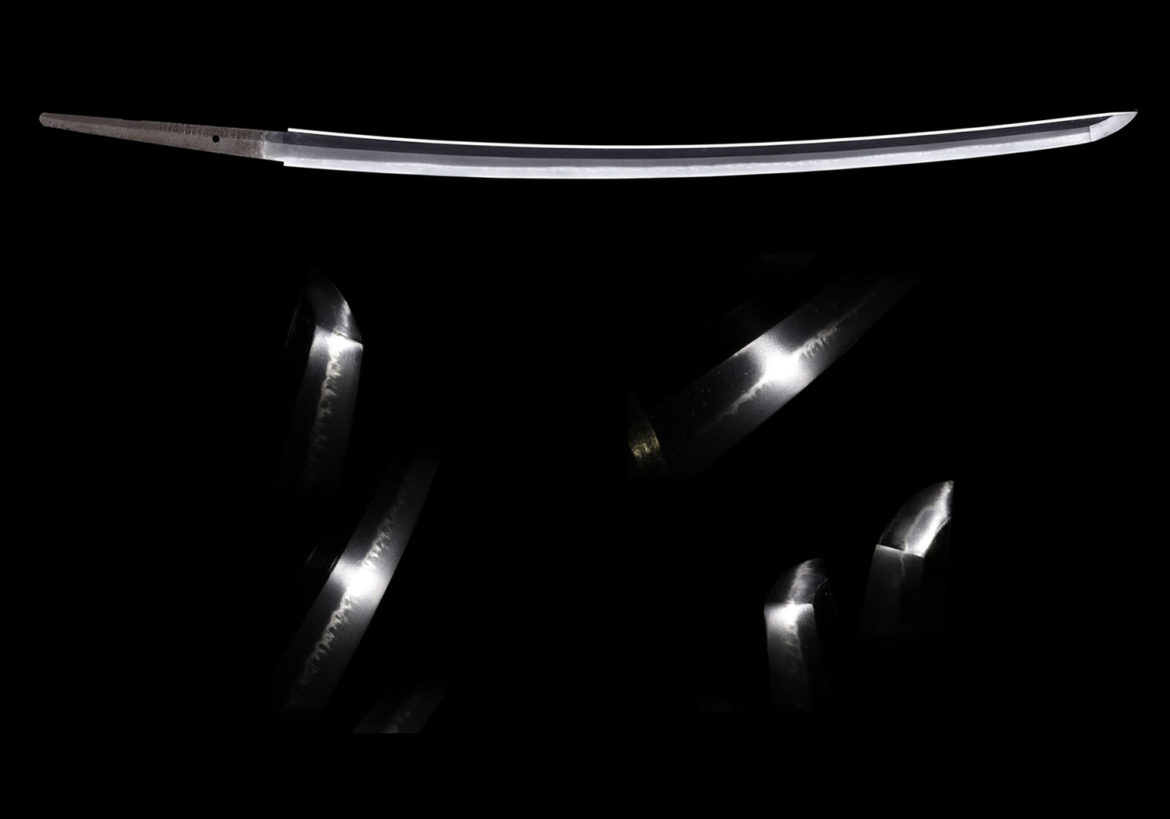
Godai Tadayoshi (五代忠吉), the fifth generation, was born in 1696. He was the son of the Omi Daijo Tadayoshi (近江大掾忠吉). He began working around 1716 and worked until his death in 1775. He signed Hizen Kuni Tadahiro (肥前国忠廣) while his father was alive. He is also known to have signed dai-mei for his father. After his father’s death in 1747 he changed his signature to read Hizen (no) Kuni Tadayoshi (肥前国忠吉). He received the title Omi (no) Kami (近江守) in 1750 after which he began signing Hizen Kuni Omi (no) Kami Tadayoshi (肥前国 近江守 忠吉). He is the first of the later smiths to sign “Omi (no) Kami” (近江守) and he is known by that nickname. He should not be confused with the second generation Tadahiro (忠廣) who is also known by the nickname “Omi no Kami” (近江守).
This smith had a long working life and produced a good number of swords. Although a later generation, his work is considered to resemble that of the first generation. He is considered the last of the “Shinto” Tadayoshi smiths. The next generation (6th) marks the beginning of the “Shinshinto” Tadayoshi smiths.
SUGATA: The fifth generation worked in the Yamashiro tradition like all the Tadayoshi smiths. The sori is shallow torii-sori with the shinogi being high. The kasane is thick and there is hiraniku.
HAMON: Chu-suguba is most frequent and it is nie-deki with abundant nie in the hamon. While other hamon such as notare, gunome, and choji can be found in the earlier generations, the later generations worked mostly in suguba. Occasionally there are exceptions, of course.
BÔSHI: The bôshi of the fifth generation tend to be on the long side (slightly stretched). The temper in the bôshi is wide with a komaru turn back and slight kaeri.
JITETSU: Two types of jihada are most commonly found on Hizen blades. They are the konuka-hada (rice grain) and the nukame-hada (misty drizzle). These types of hada consist of extremely tight mokume that has become known as the distinctive “Hizen-hada”.
NAKAGO: The fifth generation’s Tadahiro nakago are iri-yamagata and all of his Tadayoshi nakago are kuri-jiri.
MEI: As with all the Tadayoshi smiths he signed his katana tachi-mei. His signatures were as follows:
Hizen Kuni Tadahiro (1716-1747) 肥前国忠廣
Hizen Kuni Tadayoshi (1747-1750) 肥前国忠吉
Hizen Kuni Ômi (no) Kami Tadayoshi (ca.1750) 肥前国近江守忠吉
Ômi (no) Kami Tadayoshi (ca.1770) 近江守忠吉


